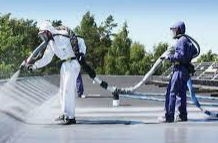Update:In recent years, water-based polyurethane has become more and more popular. With the advantages of safety, environmental...
In recent years,
water-based polyurethane has become more and more popular. With the advantages of safety, environmental protection, odorless, transparency, color, and easy cleaning, it quickly eliminates the previous paints with pungent odor and harmful substances to the body. Then let everyone know the historical evolution of water-based polyurethane products through a brief introduction.

At present, most water-based PU is mainly prepared by self-emulsifying method, with PU containing hydrophilic group as the main curing component. Water swells easily. In addition, it lacks the cross-linking density and high relative molecular mass that can be obtained by two-component solvent-based PU coatings, so the water resistance, solvent resistance, heat resistance and gloss of these water dispersion coatings are poor, serious limits its scope of use.
In order to improve the water resistance of the product, it is often used:
1.The method of improving the crosslinking density of the coating film
There are two commonly used cross-linking methods: one is to add polyhydroxy compounds with a functionality greater than 2 when synthesizing PU prepolymers to directly generate cross-linked PU prepolymers, which are well dispersed in water. , and chain extension to form macromolecules, and finally form an emulsion. This method is also called pre-crosslinking method. The disadvantage is that it is easy to increase the viscosity of the prepolymer, and it is difficult to disperse in water, which affects the stability of the emulsion. In recent years, the research on the screening and synthesis of new crosslinking agents and multifunctional chain extenders has been quite active, and has become one of the main ways to improve the physical and mechanical properties and water resistance of water-based PU.
2. Diplomatic Relations Act
The anionic PU emulsion with carboxyl is used for cross-linking, and the cross-linking reaction occurs on the carboxyl group of the PU molecule, including aziridine, carbodiimide and metal salt compounds, and the cross-linking is carried out at room temperature. This type of cross-linking agent is generally added when using PU emulsion, because the cross-linking reaction rate is very fast, and the gel is formed in a short time to break the emulsion. The cross-linking method can successfully solve the hydrophilic problem of the PU emulsion coating film, but due to the addition of a cross-linking agent, the composition of a two-component coating agent brings inconvenience to the construction, and this method is rarely used.
For water resistance, water-based polyurethane is particularly prominent. At present, the research on waterborne polyurethane at home and abroad focuses on its modification to make it functional, and through modification, the performance indicators such as water resistance and solvent resistance of the material are increased. The modification is mainly carried out by physical and chemical means, by grafting, block, internal and external linking of other polymer materials, blending or forming an interpenetrating polymer network and other methods.

